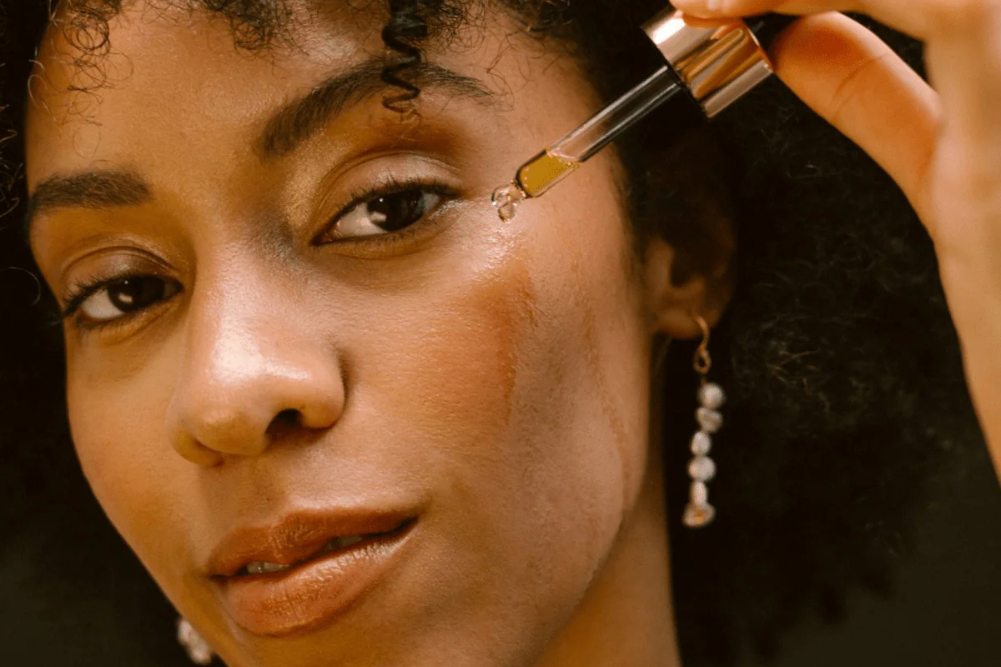What does cellulite say about your health?
At least 90 per cent of women develop cellulite, making it a very normal part of being female. And, generally speaking, cellulite is not a signifier of ill-health or of being overweight. Those who lead an otherwise exemplary life in terms of diet and exercise still get it and so do those who are on the skinny side — though there’s no doubt that lifestyle and diet factors can be the difference between mild and chronic cellulite.
As normal as it may be, however, many of us would prefer to banish it. A simple treatment or “cure” is still elusive, probably because the main drivers are inextricably linked to female architecture: a constant flow of oestrogen in our bodies and the fabric of our connective tissue. As we go through the hormonal turbulence of puberty and pregnancy, it tends to get worse and lunar-type landscapes spread from bottoms to thighs, arms and tummy.
As we age, cellulite becomes deeply entrenched and more difficult to eliminate. However, the orange peel, cottage cheese, mattress effect — or hail damage (I think I’ve covered all the terms) — can be somewhat reduced and even prevented by a healthier diet and lifestyle. Machinery can help, too.
Most health practitioners and doctors alike agree that a multi-pronged approach to cellulite will yield the best results. Here, we present some of the lifestyle practices and treatments that will help smooth out your skin.
The physiology of cellulite
The outermost layer of skin is the epidermis. Directly beneath this is the dermis, which carries hair follicles, sweat glands, blood vessels, nerve receptors and connective tissue. Below this lie our layers of fat. Cellulite develops in the most superficial of these layers, known as the hypodermis, or subcutaneous fat layer. It is unique in the way that it stores fat cells in chambers surrounded by strands of connective tissue called septa.
Emma Hobson of the Dermal Institute says, “The apex of these upright fat chambers looks like a dome that’s weak and prone to collapse when undue pressure is applied. This pressure could be from excess weight, fluid retention or lack of strength due to little or no exercise.”
She adds, “These larger chambers generate smaller compartments of fat cells that cluster tightly under the skin. The combination of free-standing fat cell chambers and compartmentalised clusters of fat cells is what creates the change in the appearance in the skin’s surface — in other words, what we know as cellulite.”
The fat cells in the two lower layers are dispersed in a loose network. Fat storage here is influenced by genetics as well as diet and lifestyle factors. These layers are not responsible for cellulite, though. Unlike cellulite, this is the fat that the body burns as energy.
Male and female fat
In women, the subcutaneous fat layer is organised into large vertical chambers where an abundance of fat can be stored. The chambers in men are arranged as small diagonal units that not only store smaller quantities of fat but are also unlikely to result in cellulite formation. Men also have thicker epidermis and dermis tissue layers in the thighs and buttocks, which gives a smoother appearance.
Two types of cellulite
Cellulite comes in two types. First, there’s the mildest type — the kind you have when young. You only really notice it when pressure is applied to the legs or skin — it’s common in most women of different ages and is a result of the compression of the fat cell chambers under the skin.
The second kind has the orange peel appearance that becomes noticeable even when a woman is standing and there’s no pressure being put on the skin externally.
Causes of cellulite
Our hormones determine how we store fat (before you curse oestrogen, remember it’s also the hormone that keeps your skin looking plump and wrinkle-free) and the structure of female connective tissue also contributes to its formation. Together, these factors lay the foundations.
The factors that trigger cellulite formation include a decrease in microcirculation due to many variables, such as a sedentary lifestyle, ageing, genetics, sickness, poor diet and smoking. As microcirculation decreases, tissues are not fed properly. This, on top of a lymphatic system that isn’t working efficiently to remove toxins from the tissues, results in a build-up of toxins and fluid in the adipose tissue. That causes swelling and starved and weakened connective tissue, which hardens around engorged fat cells, causing them to protrude into the dermis, in turn giving the bumpy appearance.
Cellulite usually appears in areas of poor circulation. Once it forms, it slows circulation even more. Ageing results in a loss of thickness and tone of the connective tissue within the dermis and the superficial fat layer. The outcome is a more visible and flabbier cellulite. Cellulite can also develop after a traumatic injury where the circulatory system has been disturbed.
The keys to reducing cellulite
Support connective tissue and fat cell integrity
The health of the connective tissue can be improved by diet and exercise. Read our Healthy Skin Diet (pg 40) and Ageing Skin section of Skin Doctor (pg 59). Nutritionist and author of The Healthy Skin Diet, Karen Fischer, says, “The body is home to billions of fat cells that sit together, side by side and layer by layer. The connective tissue keeps them in place. If your fat cells are faulty, this can also affect integrity of connective tissue.
“Fat cells are a great place for the body to store toxins. If bombarded with toxins, they become damaged and leaky. As cell membranes are largely made up of lipids, the kind of fats used to build your cell walls will determine how resistant they are to leakage. Saturated fats from meat and dairy make rigid cells and essential fatty acids from nuts, seeds and fish oils contribute to more flexible, resilient cells.
“The best patching materials for leaky cells are EFAs, such as omega-3s. EFAs also draw water from outside the cell back into the cell. This means EFAs help to keep fluid in the right place so you have hydrated cells and healthy-looking skin.”
She adds, “Your cell membranes are also made up of lecithin, which sits in the cell walls and helps to determine what enters and leaves your cells. A shortage of lecithin equals faulty cell membranes that can leak fluids into your subcutaneous layer. Lecithin is found in egg yolk, liver, nuts, corn and soy products, or you can buy lecithin granules.”
Reduce fluid retention
Nutritionist Alison Cassar says eliminating excess fluid from your tissues will dramatically reduce the amount of swelling in the skin. “Minimise dairy, salt (eat only Celtic salt) and diuretics such as coffee, tea, alcohol and fizzy drinks. Drink natural diuretics that are high in minerals, such as dandelion tea or coffee and vegetable juices (celery, fennel, cucumber). Drink more water, not less.”
Eat foods rich in antioxidants
Free radicals break down collagen in connective tissue; they are also the main agents of damage to our circulatory systems. Antioxidants in foods protect against free radical damage. Lots of different-coloured fruits and vegetables mean lots of different antioxidants, especially if you choose organic.
Avoid dairy and sugar
According to Karen Fischer, dairy is mucus forming so it makes lymphatic fluid thicker, meaning it has a harder time travelling around your body. “A sluggish lymphatic system can’t remove cellular waste fast enough, so it builds up. These cellular toxins can be harmful if they are floating in your blood, so they are quickly relocated to be safely stored in your fat.”
Dairy, she says, also supplies saturated fat and arachidonic acid, which your body uses to make rigid cell walls that are prone to leaking. “Eliminating dairy is essential to reducing the appearance of cellulite. It enhances lymphatic health and allows better absorption of other minerals such as zinc, copper and magnesium — all essential for firm and toned skin.”
Sugar and other refined foods create high blood sugar levels and rob the skin of vitamin C. Karen says excess sugar in the blood can also cause blood vessel damage, which may hamper circulation to cellulite-prone areas. “Vitamin C is essential for strong, healthy blood vessels and low levels of vitamin C can lead to weak blood vessels and varicose veins.”
Sustained high blood sugar levels also promote glycation, a process that destroys collagen in the connective tissue (see Skin Doctor pg 61).
Promote good bowel health and good digestion
Karen says, “Good bowel health is essential for healthy skin. Poor bowel health can result in constipation, allowing toxins from your poo to be reabsorbed by your body, which slowly poisons your whole system. This will show in the texture and colour of your skin.”
Increase hydration
Drink enough fluids to prevent both dehydration and a sluggish lymphatic system. Dehydration can damage your cells, cause constipation and compromise gut health. The best way to enhance hydration is to drink water at room temperature, not cold, says Alison, with 6–8 glasses a day the ideal amount to aim for. Electrolyte drinks such as young coconut water are excellent for hydrating skin cells.
Essential fatty acids strengthen skin cell walls, preventing leakage of water. The more water there is in your skin cells, the plumper your skin will be over the fat chambers and the less dimpling will there will be.
Balance oestrogen and avoid xeno-oestrogens
Excess oestrogen can make cellulite worse. If you suffer from PMT, it could be that you have an oestrogen imbalance (see Acne in Skin Doctor pg 57). Xeno-oestrogens are toxic substances that mimic oestrogen and can give our bodies an extra surge when it’s not wanted. These are found in pesticides, dioxin (present in bleached products such as tampons, toilet paper and disposable nappies), some plastics , PCBs (polychlorinated biphenyls) and some drugs.
“The women of Peru don’t have cellulite, says New York-based Dr Lionel Bisson, author of The Cellulite Cure. He puts it down to a diet high in natural phyto-oestrogens, which he says balance oestrogen levels, whether there’s too much or too little. Foods such as flaxseed, wild yam, soy, red clover, dong quai, cabbage, cauliflower, Brussels sprouts and broccoli all contain these helpful plant chemicals.
Avoid toxins
Many of the toxins in our food, personal care products and skincare products are stored in fat cells, alcohol included. This accumulation of toxins makes the fat harder to budge.
Reduce stress
Stress causes high levels of cortisol, which contributes to the constriction of blood circulation and the lymphatic system. It’s your lymphatic system that helps your body get rid of the toxins that contribute to cellulite. Whenever possible, relax. Take up yoga and meditation classes or any practice that will help you destress and relax.
Support elimination pathways and lymph flow
Fat cells are surrounded by fluid, which both nourishes tissue and provides an effective waste removal system. When fats, fluids and toxins are trapped, however, the connective tissue hardens, giving a dimpling effect. Good diet, exercise, dry body brushing and deep breathing will help improve your lymphatic system.
Improve circulatory system
Move about, exercise and follow a nutritious diet. Vitamin C and bioflavonoids found in berries are great for promoting capillary strength. Herbs to improve circulation include ginkgo biloba, red clover, cayenne pepper, rosemary and sassafras. Omega-3s are also helpful, as is rutin.
Smoking is responsible for many crimes against good Health, one of them being the constriction of capillaries. It further damages the connective tissue that contributes to the rippling effect of cellulite.
Exercise
An inactive lifestyle leads to poor circulation, weakening of blood vessels and poor lymphatic flow, which all results in the connective tissues tightening their hold on the fat cells. Think of stagnant pond water that harbours toxins and debris.
Exercise scientist and trainer Damien Kelly (www.damienkelly.com.au) says exercise is the best anti-cellulite treatment. Cellulite is simply another form of fat. It just has more fluid around it, which causes it to take up a larger area and to fold in on itself, which gives the skin its unattractive texture.
“A combination of different forms of cardio and toning for your specific cellulite areas is the solution. Unfortunately, it’s not a quick fix, as cellulite can be particularly stubborn, but just remember that you won’t find an Olympic track athlete with cellulite and some of those ladies are surely predisposed to it.”
So, as with most things that are worth while in life, reducing cellulite will take some effort. And here’s how to do it.
Go cardio. Damien says, “The first secret of cellulite-busting cardio exercise is “volume”. It doesn’t matter how hard you do it, how many times a week or how long the session. It just needs to add up. Use a pedometer. To maintain ideal weight, do 7500 steps a day. To lose weight, do 10,000. If you’ve recently lost weight, 12,500 steps keeps it off. Add up your steps at the end of the month and add 30 per cent monthly until you’ve reached your target.
“The second secret of cellulite busting is variety. Walking is convenient, but you need to fight boredom. Vary your route. Add challenges such as stairs. Or cycle one day, swim one day, go to exercise classes another day … be creative and have fun.”
Pilates instructor Renee Scott of Balance Moves in Bondi, Sydney says Pilates reduces the severity of the appearance of cellulite. “It massages all parts of the body, including the hard-to-reach areas of the thighs, tummy and bottom. It’s perfect for cellulite as it provides the package of exercise and massage in one.
“People can learn to massage their own bodies to flush out toxins and stimulate stagnant areas while getting fit at the same time,” she adds. “Pilates improves circulation and lymph flow and tones the body, too. One of the key tenets is that it educates your body, and mind, to hold itself better, for better posture, movement and circulation and feel-good factor.”
Dry body brushing
A very effective and simple way of assisting lymph flow is body brushing, says Emma Hobson. “A large, soft, natural-bristle body brush is used to gently and lightly stroke over the surface of the skin of the legs in the direction of the nearest lymph node (back of knees, groin), which will not only help disperse oedema and encourage lymph flow but will gently exfoliate, too, leaving the skin soft and smooth.”
Deep breathing
Another way to pump lymphatic fluid around the body, says Karen Fischer, is to breathe deeply. “When you breathe correctly, you utilise the diaphragm, a muscle found below your lungs, which causes movement of your lymphatic fluid, enabling it to collect cellular garbage and problem water. When you breathe well, your lymphatic vessels drain problem water from tissue spaces and this helps to prevent fluid retention.”
Creams
Creams and lotions targeted at cellulite may slightly improve the texture and tone of the skin, but they mostly work on the top layer and don’t get rid of cellulite.
Ingredients that encourage microcirculation include gotu cola, horse chestnut, ginkgo biloba and birch oil. Again, popular ingredients such as retinoids and AHAs may smooth out the skin, but used alone will not budge cellulite. Caffeine is popularly used because it contains theophylline, a chemical that blocks the enzymes in fat, preventing the body from flushing it out. Again, it may help improve skin tone a little but won’t do anything about cellulite.
Treatments
Massage
Emma Hobson says pummelling fat or firm massage may do more harm than good as you may actually stimulate additional fluids into the tissues. Unless you accompany massage with a means of improving blood flow and lymph flow out of the tissues, you may even exacerbate the problem.
She recommends manual lymph drainage (MLD), a light rhythmic pumping massage pioneered by Dr Emil Vodder. This technique has the unique result of aiding in the elimination of lymph fluids without increasing blood flow. It helps break down fatty tissue and is recommended twice a week, but it’s a method that requires proper training to be performed effectively.
At home, you can massage the cellulite area daily using essential oils specific for cellulite. These include oregano, juniper, grapefruit, lemon, fennel, cypress, celery, thyme, rosemary, sage and basil.
Endermologie
Endermologie is a non-invasive treatment that manipulates connective tissue. A high-powered hand-held massage tool that consists of a treatment head and two motorised rollers lifts and rolls the skin to stimulate the venous and lymphatic systems, thereby eliminating toxins. People report that it does improve texture and tone of skin and may reduce the appearance of cellulite, but to get the best results you’ll need about 20 treatments and one or two maintenance treatments per month. It does not completely get rid of cellulite.
Vela Smooth
This treatment combines radio frequency, infrared light energies, plus negative pressure and tissue manipulation. A vacuum and specially designed rollers manipulate and smooth out the skin. This increases the metabolism of stored energy, thereby shrinking the size of the fat chamber. This has good results, with around 16 treatments needed and maintenance once or twice a month. Again, it doesn’t completely remove cellulite.
Body wraps
This involves covering the body in cloth permeated with herbal extracts, seaweed and mud. It aids perspiration and detoxification. It’s a great relaxation aid and treatment for softening the skin, but nor is it a miracle cure for cellulite.







